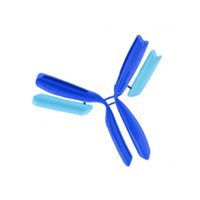OP93 Sigma-AldrichAnti-BRCA1 (Ab-2) Mouse mAb (MS13)
Anti-BRCA1 (Ab-2), mouse monoclonal, clone MS13, recognizes ~220 kDa BRCA1 in MCF-7 cells. It is validated for Western blotting, immunofluorescence, immunoprecipitation, and for paraffin sections.
More>> Anti-BRCA1 (Ab-2), mouse monoclonal, clone MS13, recognizes ~220 kDa BRCA1 in MCF-7 cells. It is validated for Western blotting, immunofluorescence, immunoprecipitation, and for paraffin sections. Less<<Synonymes: Anti-Breast Cancer Susceptibility Protein
Produits recommandés
Aperçu
| Replacement Information |
|---|
Tableau de caractéristiques principal
| Species Reactivity | Host | Antibody Type |
|---|---|---|
| H | M | Monoclonal Antibody |
Prix & Disponibilité
| Référence | Disponibilité | Conditionnement | Qté | Prix | Quantité | |
|---|---|---|---|---|---|---|
| OP93-100UG |
|
Ampoule plast. | 100 μg |
|
— |
| Product Information | |
|---|---|
| Declaration | Sold under license of U.S. Patents 5,753,441 and 6,162,897. |
| Form | Liquid |
| Formulation | In 0.05 M sodium phosphate buffer, 0.2% gelatin. |
| Positive control | MCF7 cells |
| Preservative | ≤0.1% sodium azide |
| Quality Level | MQ100 |
| Physicochemical Information |
|---|
| Dimensions |
|---|
| Materials Information |
|---|
| Toxicological Information |
|---|
| Safety Information according to GHS |
|---|
| Safety Information |
|---|
| Product Usage Statements |
|---|
| Storage and Shipping Information | |
|---|---|
| Ship Code | Blue Ice Only |
| Toxicity | Standard Handling |
| Storage | +2°C to +8°C |
| Do not freeze | Yes |
| Packaging Information |
|---|
| Transport Information |
|---|
| Supplemental Information |
|---|
| Specifications |
|---|
| Global Trade Item Number | |
|---|---|
| Référence | GTIN |
| OP93-100UG | 04055977209693 |
Documentation
Anti-BRCA1 (Ab-2) Mouse mAb (MS13) FDS
| Titre |
|---|
Anti-BRCA1 (Ab-2) Mouse mAb (MS13) Certificats d'analyse
| Titre | Numéro de lot |
|---|---|
| OP93 |
Références bibliographiques
| Aperçu de la référence bibliographique |
|---|
| Scully, R., et al. 1996. Science 272, 123. Gudas, J.M., et al. 1996. Cell Growth Differ. 7, 717. Vaughn, J.P., et al. 1996. Cell Growth Differ. 7, 711. Goldgar, D.E. and Reilly, P.R. 1995. Nat. Genet. 11, 113. Merajver, S.D., et al. 1995. Clin. Can. Res. 1, 539. Merajver, S.D., et al. 1995. Nat. Genet. 9, 439. Struewing, J.P., et al. 1995. Nat. Genet. 11, 198. Thompson, M.E., et al. 1995. Nat. Genet. 9, 444. Futreal, P.A., et al. 1994. Science 266, 120. Miki, Y., et al. 1994. Science 266, 66. |







